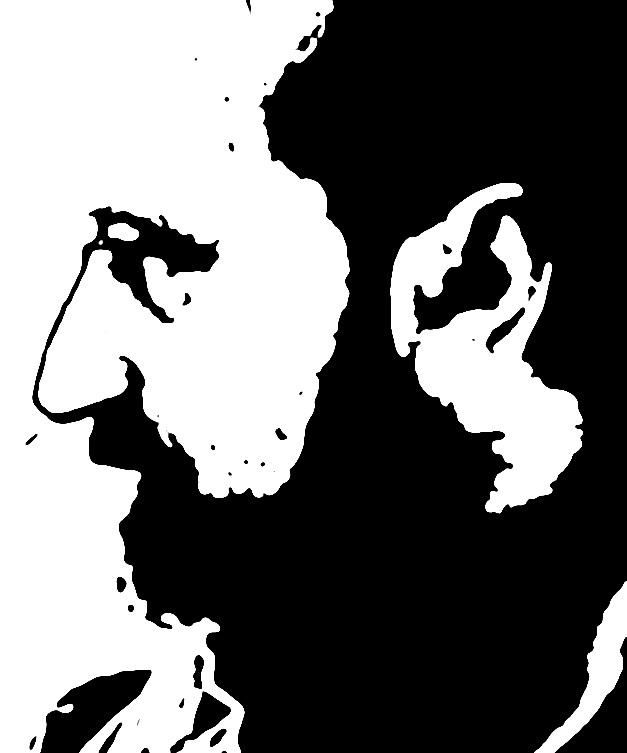| |
|
I met Jorge Peixinho
in 1977. I was 19 years old, he was 37. Immediately, we became
great friends for life. He was, without any doubt, one of the
most important composers in the world in the 20th century and,
in particular, after the Second World War.
Jorge died in 1995, at the age of 55, and then he was practically
forgotten by the world!
In 2019, Isabel Alves - dear friend whom I admire a lot - suggested
I ahould do something for Ernesto de Sousa's hundred years in
2021. She had been married to him over years. I met Ernesto very
quickly, in 1987. He would die in the following year. Our meeting
was a thunder-light. Five years later, I would knew Isabel and
started collaborating with her, especially in the Ernesto de
Sousa Scholarship.
We initially thought about a concert and I had already tackled
something about it when the pandemic that paralyzed the planet
broke out.
In 2021, Isabel suggested me to write something about Ernesto.
But, our meeting had been so volatile!
Ernesto de Sousa and Jorge Peixinho were great friends, collaborating
on many common projects.
Both are two important characters of Portuguese culture and,
in the case of Jorge, also of Brazilian universe, at least of
São Paulo.
So, I wrote the little book Os Dois Amigos - Jorge Peixinho
and Ernesto de Sousa, dedicated to Isabel, at Ernesto's centenary
and in memory of both, Jorge and Ernesto.
The paper book (in Portuguese) is for sale on Amazon - a version
which I strongly advise, for philosophical and cognitive reasons
- but it is also freely accessible at academia.edu - unfortunately
only in Portuguese... at least by now.
The book has many images and deals with a fragment of the history
of Portugal and Brazil, music and art, through our meetings.
But, I had promised to Isabel that I would also compose a concert.
And I haven't forgotten my promisse.
When someone asked Ernesto to take "a photograph"
and gave him, at that moment, a camera, instead of taking "one
photograph" he started shooting non-stop until the film
was over. That sequence of images was "the photograph"
for him. Rightly, it was the moment, as it had been established
by synthetic cubism. Thus, in fact, the contact proof was a single
photograph.
Yojimbo, which in Japanese means "bodyguard", was
one of Akira Kurosawa's most important movies. Both Kurosawa
and Toshiro Mifune were my heroes particularly in my teens. I
was born in São Paulo, which represents the largest colony
of Japanese descendants in the world. Over the years I have studied
the history of Japan, its architecture, music, language, poetry,
philosophy and religions - not to mention that I have always
enjoyed Japanese cuisine very much. My father studied Japanese
when he was young. So, I became a little Japanese in my soul.
Jorge Peixinho also had a great admiration for Japan.
I fragmented a long scene of the movie Yojimbo, just as Ernesto
did with the photographic cameras. Then, as if I were dealing
with a contact proof, I shuffled all these images following chance
operations.
This first result was subjected to two image treatments in order
to capture traces of the action drawing, creating an abstraction.
Thus, the order becomes paratactic, by coordination, leading
the viewer to a continuous exercise of discovery, associating
spots and shapes, always creating new content.
It is an animated cartoon.
Each person is, therefore, what is most important in this work.
Music is a result of the movie.
Thus, Joy Mob: I is the title of both works, an anagram of Yojimbo
which, in English, means approximately the way both Jorge and
Ernesto looked at the world.
It was about a moment when peace and love were constantly present.
The challenge was to make something deeply connected to another
thing, but not become degenerated, keeping an integrity. We have
three basic layers - Kurosawa's Yojimbo, Joy Mob: I and the music
(with the same title). I believe I was successful in creating
both a movie and a musical composition that, despite being both
so intensely connected each other, kept their independence.
All this reminds me Vladimir Mayakovsky when, quite correctly,
he said that people were born to shine.
Emanuel Dimas de Melo
Pimenta
|
|
|

